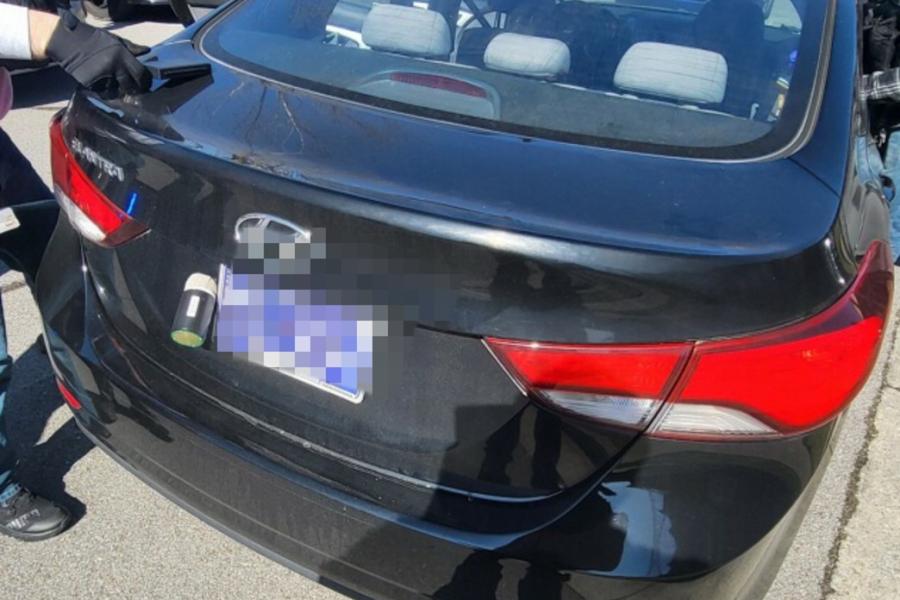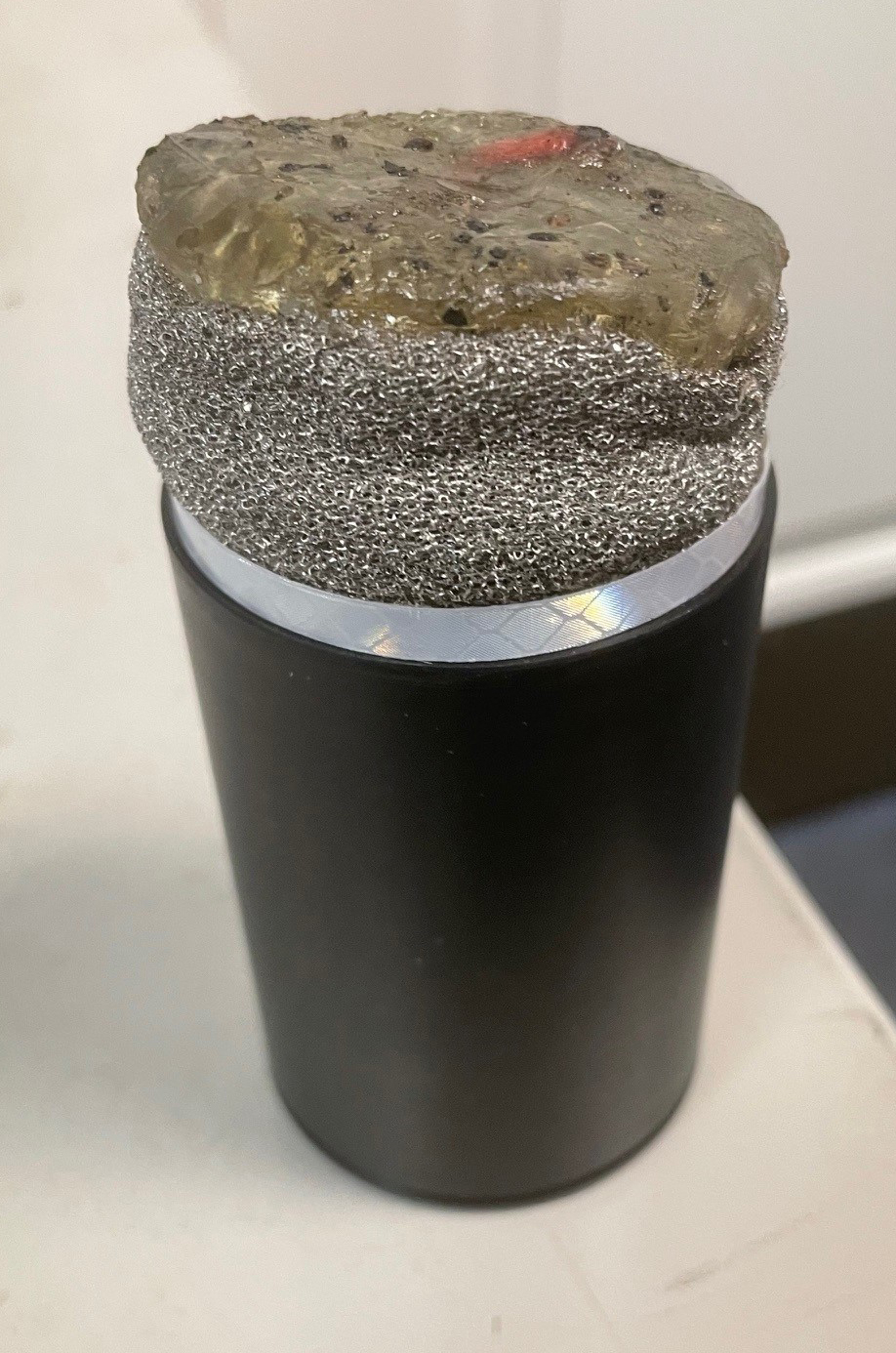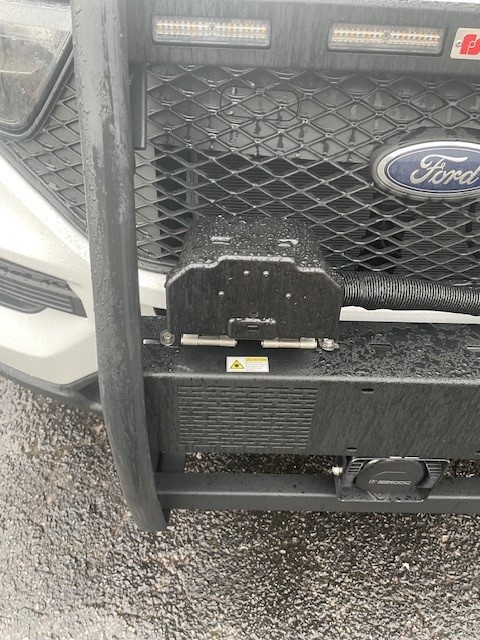GPS-powered darts helping Belle Meade recover stolen, suspect vehicles without need for pursuit

By KATE COIL
TT&C Assistant Editor
A new technology is helping the Belle Meade Police Department recover stolen vehicles without engaging in high-speed pursuits.
Belle Meade Police Chief Chuck Williams said the department recently completed its first arrest and vehicle recovery using StarChase Technology’s vehicle tracking system. The equipment allows departments to tag and track vehicles with GPS-powered darts, thereby continuing to track a stolen or suspect vehicle without engaging in a high-speed pursuit.

Williams said Belle Meade’s location – almost completely surrounded by Metro-Nashville as well as roughly two-miles from the Williamson County line and within ten of the Cheatham County line – means that the city has a lot of traffic coming in and out of the Belle Meade Police Department’s jurisdiction.
“We have a large number of LPRS [license plate readers] for a community our size,” he said. “We were routinely getting stolen vehicle hits – mostly out of Metro-Nashville but also all around the state and different states. We would find these vehicles, but as soon as we turned on our blue lights, they would just take off. It was getting so frustrating. We obviously didn’t chase them, but that didn’t mean that for a couple of miles they would be driving like maniacs trying to get away. It was becoming so routine that if we managed to get a car to stop, it always turned out the driver was the registered owner who had recovered their car.”
Officials with StarChase reached out to Williams stating they were interested in employing their GPS dart technology in the area. While the company had long been working in California, they were hoping to provide solutions to issues surrounding high-speed chases nationwide.
The Belle Meade Police Department was awarded a grant from the state's Office of Criminal Justice Programs that fully covered the cost of purchase and installation for the trackers as well as received instruction from the company on how to safely use the technology.
“The company got us all the equipment and sent a team up here to show us how to use and install it,” he said. “We did an eight-hour training day. Part of that was in the classroom showing how to use the mapping portion and how to load the canisters. The other part was actually on a controlled track tagging police cars as practice.”
Williams described the technology as something out of James Bond or the Fast and Furious series.

“On the push bumper of the police cruiser there is a device,” he said. “The dart has some really strong glue and a tracking device on it. It takes a few minutes to warm the glue up to stick. The device has a laser light to show where the dart will hit on the vehicle. The officer will then hit the button to fire the dart at about 25 miles per hour. It won’t dent the vehicle or do any damage at that speed. Then the officer can back off and follow the vehicle on the maps.”
Williams said the department tries to dart vehicles at lower speeds both to increase the success that the dart will hit and to avoid causing the suspect to flee. Once the dart hits, GPS software allows the department to monitor the vehicle’s location from afar.
The department’s first successful arrest from the use of the technology came in February when a LPR camera hit on a stolen vehicle on Belle Meade Boulevard. An officer was able to hit the vehicle with a dart and then back off the vehicle.
“I was anxious to see how it would work, and it was perfect,” Williams said. “We darted the car, and it only sped up a little bit. We didn’t even really follow it. Within a mile or two, he was back doing the speed limit. We just followed him until about 20 minutes later he parked in an apartment complex. By that time, we had contacted Metro Nashville [PD], and they had their helicopter monitoring the suspect. We placed spike strips at every exit to the complex, and then went in and got him with Metro’s Violent Crimes Unit. When he was arrested, he told the officers ‘how in the world did y’all find me?’ He had no clue.”
Williams said the technology is allowing departments to work better together in making arrests.
“For instance, let’s say a vehicle is broken into in Smyrna, and this criminal is wreaking havoc there,” he said. “If they wind up in Belle Meade, we want to know about it. There are a lot of criminals who may go from Smyrna to Franklin to Belle Meade. This particular suspect stole this vehicle in Metro Nashville, and they were looking for him. We were able to put their case together and keep a bad guy out of Belle Meade. It’s good for everyone.”
The use of GPS darts comes at a time when law enforcement pursuit policies are being scrutinized across the country following high-profile incidents of both property damage and deaths of both officers and bystanders. According to the National Highway Traffic Safety Administration (NHTSA), fatal crashes involving police pursuits kill more than one person every day with 525 people were killed in 2021, and 545 were killed in 2020 as a direct cause of pursuits.
The Police Executive Research Forum released a report in September 2023 about considerations departments should take regarding their own pursuit policies. The report by the national think tank on policing standards followed a noted increase in fatalities related to pursuits since the pandemic as well as criticism several major departments had received for their increased use of pursuits.
Williams said the GPS darts are a way of keeping both officers and the public safe.

“So many times we get behind these guys, and they just take off and drive so crazy,” Williams said. “You can’t imagine the guilt of someone dying all in the pursuit of a property crime. There are a lot of departments restricting their policies because innocent people are getting killed. These suspects don’t care about that. I think this is a really good solution for what is happening, especially since the bad guys know we won’t chase them over a stolen car.”
Jay Stanley, senior Policy Analyst with the American Civil Liberties Union’s (ACLU) Speech, Privacy & Technology Project, issued a statement on behalf of the ALCU affirming that the use of GPS darts do not require warrants so long as:
- They are only deployed in instances where officers have the “equivalent of probable cause of wrongdoing and do not have time to get a warrant”
- Law enforcement only deploys the darts with the intention of catching up to the suspect as soon as possible with no intention of using the dart to follow or monitor the suspect, and
- The device is removed and location tracking ends when police catch up to the suspect the first time.
Stanely also cited the technology’s potential to save lives, particularly those of innocent bystanders who are the most likely victims during fatal pursuit encounters, as an important consideration.
Williams said he encourages other departments to look into GPS darts for themselves.
“They are more than welcome to get in touch with me so we can demo it for them,” he said. “It’s definitely a solution to look into, especially if you are in a jurisdiction where there are a lot of people running from police and getting away with it. This is a great solution to arrest people and keep everyone – not just officers but the innocent people driving on the road and even the suspect – safe.”

